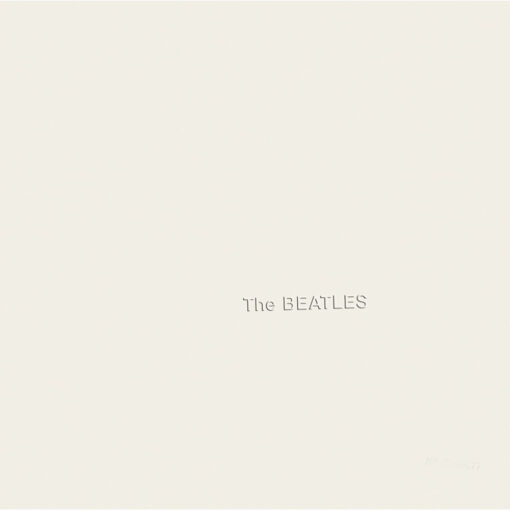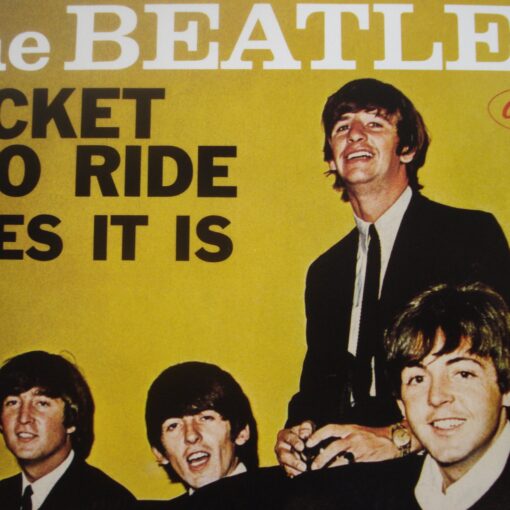- Published in 1967
- Author: Lennon/McCartney
- Track 1 on “Magical Mystery Tour“
- Track 11 on “The Beatles 1967-1970” (Blue Album)
JOHN 1972: “Paul wrote it. I helped with some of the lyric.”
JOHN 1980: “Paul’s song. Maybe I did part of it, but it was his concept.”
PAUL circa-1994: “‘Magical Mystery Tour’ was co-written by John and I, very much in our fairground period. One of our great inspirations was always the barker: ‘Roll up! Roll up!’ The promise of something– the newspaper ad that says ‘guaranteed not to crack,’ the ‘high class’ butcher, ‘satisfaction guaranteed’ from Sgt. Pepper… You’ll find that pervades alot of my songs. If you look at all the Lennon/McCartney things, it’s a thing we do alot.”
About “Magical Mystery Tour”
“Magical Mystery Tour” is the title track to the December 1967 television film of the same name. This song was included on the band’s Magical Mystery Tour soundtrack, which was released as a double EP in Britain and most markets but as an album in America, where Capitol Records supplemented the singles with the new songs.
It was written mainly by Paul McCartney, but credited to Lennon–McCartney. According to McCartney, the song was co-written by the two of them. A contemporary account of the recording sessions for the song describes McCartney arriving with the chord structure but only the opening refrain (“Roll up / Roll up for the mystery tour”). In the manner of Lennon’s “Being for the Benefit of Mr. Kite!“, McCartney requested Mal Evans, the Beatles’ assistant and former road manager, to look for posters with text that could be adapted for the song. A brainstorming discussion took place in the studio the next day to complete the lyrics after Evans was unsuccessful.
The lyrics describe in general the premise of the film: a charabanc mystery tour similar to those popular in Britain when the Beatles were young. The song was “very much in our fairground period”, McCartney said, because he and Lennon expanded the tour to make it magical, making the tour more surreal than the real ones. Since the Beatles were experimenting with acid during those years, some interpret the lyric as an explicit reference to drugs.
The Beatles recorded the track in April and May 1967, shortly after finishing work on Sgt. Pepper’s Lonely Hearts Club Band and before beginning work on Magical Mystery Tour. The song introduces the audience in the style of McCartney’s opening title track to Sgt. Pepper, and features ringmaster calls, a trumpet fanfare, and traffic noises.
Meaning of “Magical Mystery Tour”
The song “Magical Mystery Tour” doesn’t have an explicit narrative or meaning like some of the Beatles’ more story-driven songs. Instead, it serves as an introduction to the whimsical, psychedelic journey that the “Magical Mystery Tour” project was meant to be. The song has a lively, carnival-like atmosphere with its catchy melody and energetic arrangement.
The lyrics, while not conveying a specific storyline, evoke a sense of wonder, adventure, and mystery. It invites the listener to join in on this imaginative and surreal journey. It’s worth noting that the entire “Magical Mystery Tour” project, including the album and the accompanying film, is often seen as a reflection of the psychedelic and experimental spirit of the late 1960s.
Overall, “Magical Mystery Tour” sets the tone for the broader creative endeavor and embodies the spirit of exploration and artistic innovation that characterized the Beatles’ work during this period.
Personnel
The Beatles
- Paul McCartney – lead and backing vocals, bass, piano, bass guitar, ringmaster’s voice, percussion
- John Lennon – lead and backing vocals, acoustic guitar, percussion
- George Harrison – harmony vocal, lead guitar, percussion
- Ringo Starr – drums, percussion
Additional musicians
- Mal Evans – percussion, tambourine, maracas, triangle
- Neil Aspinall – percussion, sandpaper blocks, wood blocks
- David Mason – trumpet
- Elgar Howarth – trumpet
- Roy Copestake – trumpet
- John Wilbraham – trumpet
- Lloyd Smith – trombone
- Paul Oldfield – bass trombone
- Glenn Monroe – tuba
- Morgan Ferguson – euphonium



